

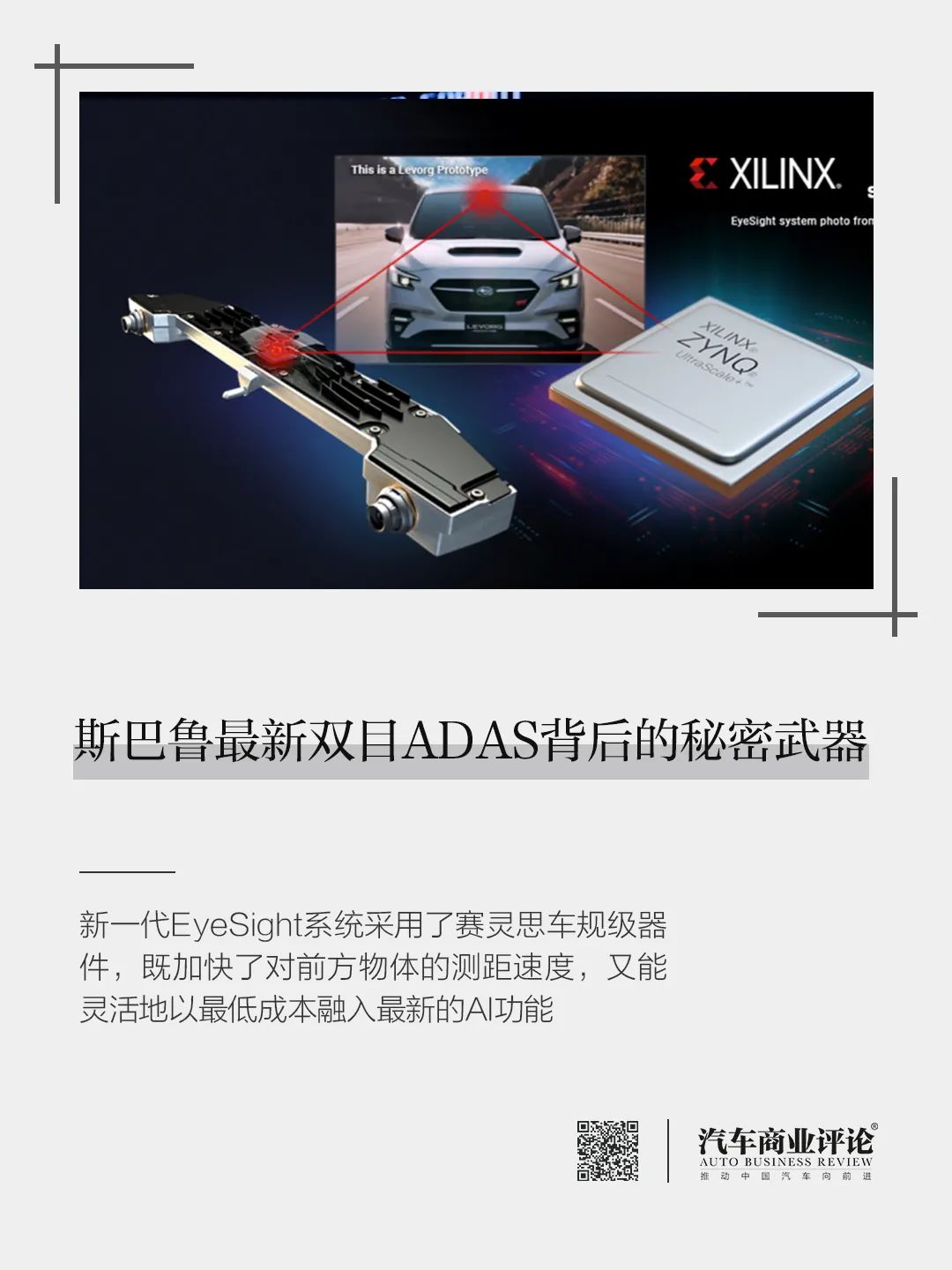
In recent years, cars have not only made qualitative leaps in both active and passive safety but have also introduced more advanced concepts of “preventive safety”.
The U.S. Highway Safety Insurance Institute believes that equipping cars with ADAS (Advanced Driver Assistance Systems) can prevent over 60% of traffic accidents.
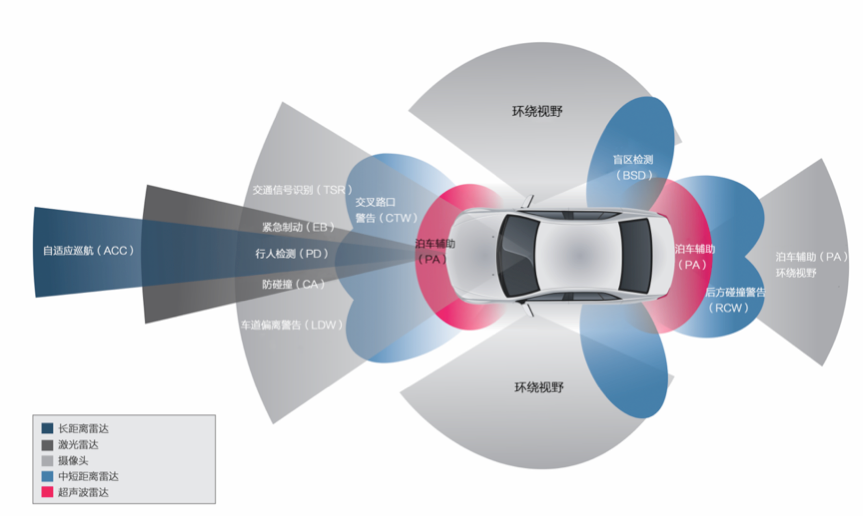
ADAS utilizes sensors installed around the vehicle to collect information about the internal and external environment, helping drivers detect dangers as early as possible and take corresponding measures, or even allowing the system to actively intervene in vehicle control to reduce the occurrence of accidents from the source.
In today’s automotive market, an increasing number of automakers are starting to equip ADAS as standard on mass-produced vehicles, a feature that was previously only available on luxury models, is gradually being implemented in most models of independent brands.
According to the China Association of Automobile Manufacturers, it is expected that by 2020, the installation rate of automotive driving assistance, partial automation, and conditional automation will exceed 50%, and the installation rate of connected driving assistance systems will reach 10%, with a total penetration rate of ADAS reaching 50%.
ADAS is also seen by many manufacturers as a focus for research and promotion, and Subaru, which has a long history of research and development in preventive safety, is no exception.
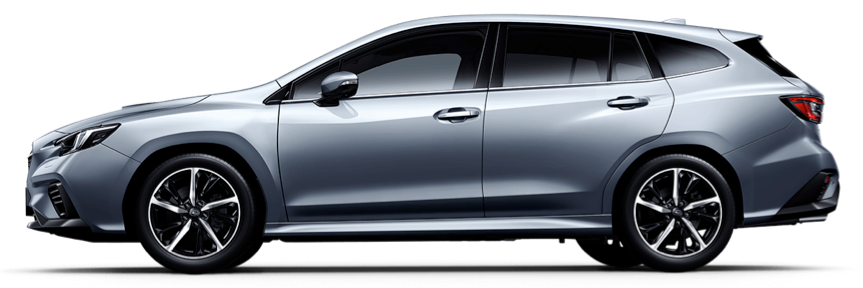
On August 20, Subaru’s all-new generation LEVORG officially began pre-orders in Japan. The new car is equipped with the latest generation EyeSight active safety system package, with 360° panoramic cameras throughout the vehicle, combined with the powerful computing capabilities of Xilinx SoC (System on Chip), enabling the vehicle to achieve extensive collision prevention capabilities. The new system, in conjunction with high-definition maps, can assist drivers in decelerating in advance when approaching a curve, and under certain conditions, it can also achieve hands-free assistance for automated driving.

Subaru’s Commitment to Driving Safety
Subaru has always placed great importance on improving automotive safety performance. As early as 1989, it established the Subaru Technical Research Institute to focus on automotive intelligence and robotics technology research. The stereo camera technology used in EyeSight began development at that time. As an automaker, Subaru naturally thought of applying stereo cameras to cars.
At the Tokyo Motor Show in 1991, Subaru unveiled the stereo camera concept to the public. In 1992, it released a vehicle equipped with a stereo camera internally.
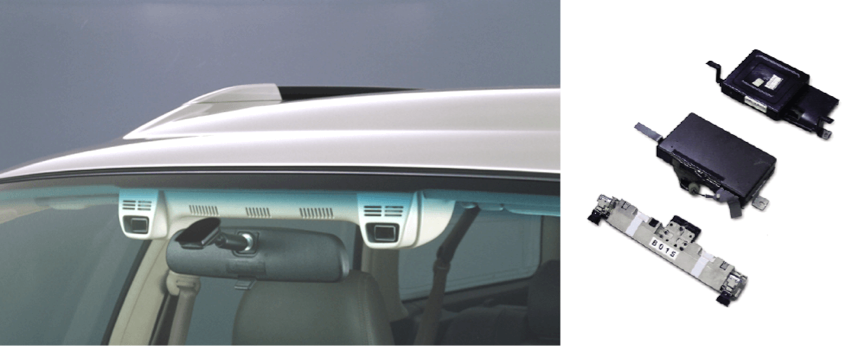
In May 2008, the first generation EyeSight system was officially launched with the Legacy. At that time, the pre-collision system could perform emergency braking but could not bring the vehicle to a complete stop.
In May 2010, the second generation EyeSight system was equipped in the fifth generation Legacy, and its pre-collision system could stop the vehicle at speeds of up to 30 km/h.
The third generation EyeSight system was released in October 2013, adding lane-keeping functionality. When the front vehicle performs an emergency brake and the relative speed between the front and rear vehicles is less than 50 km/h, the pre-collision system can prevent accidents. Currently, the installation volume of this system has exceeded 1 million units.

The Advantages of the New Generation EyeSight System
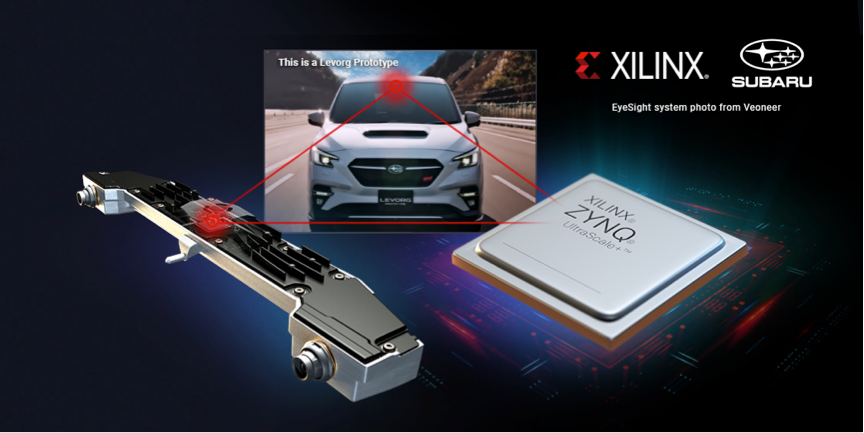
On Subaru’s all-new LEVORG, stereo ADAS is formed by equipping a color high-resolution recognition camera on each side of the front windshield, combining the object recognition capabilities of a monocular camera with the distance measurement capabilities of a laser radar.
Monocular ADAS needs to recognize obstacles before measuring distance, which requires a large sample library. After recognizing an object, it obtains distance information from the imaging size or the position information in the image.
On the other hand, stereo ADAS is developed based on the binocular distance measurement principle of human vision, eliminating the need for a sample library. It converts various obstacles captured by the camera into distance in real-time, achieving collision warnings, lane departure warnings, and other intelligent driving assistance functions by calculating the relative speed and distance to the object.
Stereo ADAS technology requires higher standards and greater visual computation, so currently, there are very few companies commercializing it, and Subaru is one of the few automakers that have applied stereo ADAS systems on a large scale in mass-produced vehicles.
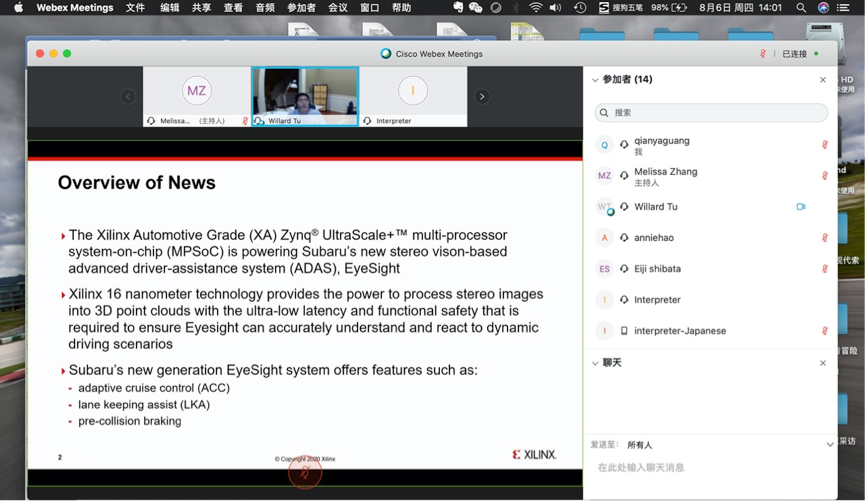
On the eve of the new car’s pre-sale, Automotive Business Review, as a professional media in China’s automotive industry, conducted an exclusive interview with Subaru’s General Manager of Autonomous Driving and Advanced Safety Business, Eiji Shibata, and Willard Tu, Senior Director of Automotive Business at Xilinx, to gain in-depth insights into the new generation EyeSight system and the role of Xilinx SoC behind it.
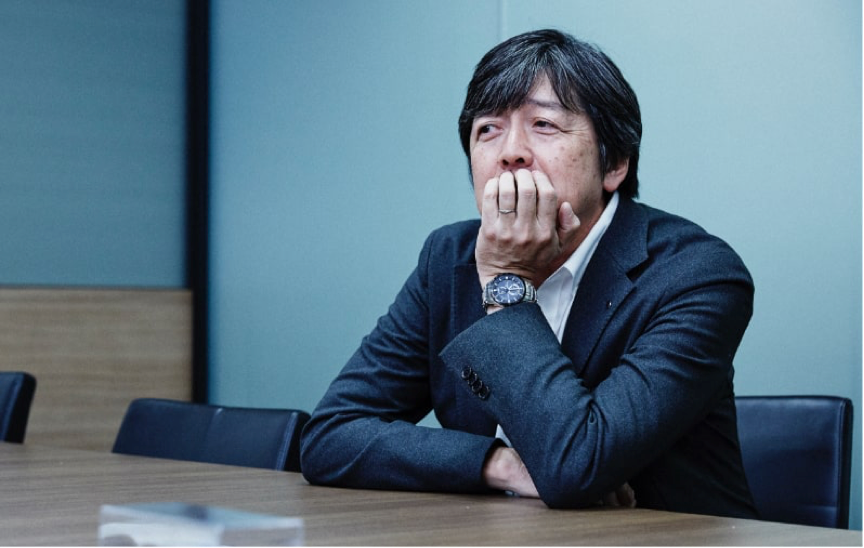
Eiji Shibata told Automotive Business Review: “Our primary goal is to gradually eliminate fatal accidents through advanced driver assistance systems and further reduce accident rates. To achieve this, we must increase various technologies and components, which will raise system costs. However, this does not eliminate accidents because fewer and fewer people can afford them, which contradicts our goal of reducing accidents.
Therefore, we believe that how to equip more advanced collision avoidance safety systems on vehicles that ordinary users can afford will become a key point in practical terms. Our EyeSight system does not require the installation of laser radar or monocular cameras; it only needs stereo cameras to observe comprehensively, allowing us to construct the system with higher precision and lower costs, thus enabling us to equip this system on all vehicles and provide safety features for all users.”

He stated that the new generation EyeSight system has improved the stereo camera, utilizing the Xilinx’s heterogeneously scalable multi-processing chip series Zynq UltraScale+™ MPSoC based on FPGA (Field Programmable Gate Array), transforming stereo images into 3D point clouds, assisting Subaru in accelerating all data processing with ultra-low latency, achieving faster and more accurate recognition of objects ahead. Additionally, it can leverage the unique flexibility of programmable chips to repeatedly reprogram hardware through software, continuously adapting, improving, and updating the system’s design to quickly integrate the latest AI features and meet the ever-changing scene requirements.
The new EyeSight system has widened the entire forward perspective by upgrading the stereo cameras, while also adding four corner radars for all-around sensing and collaborative control.
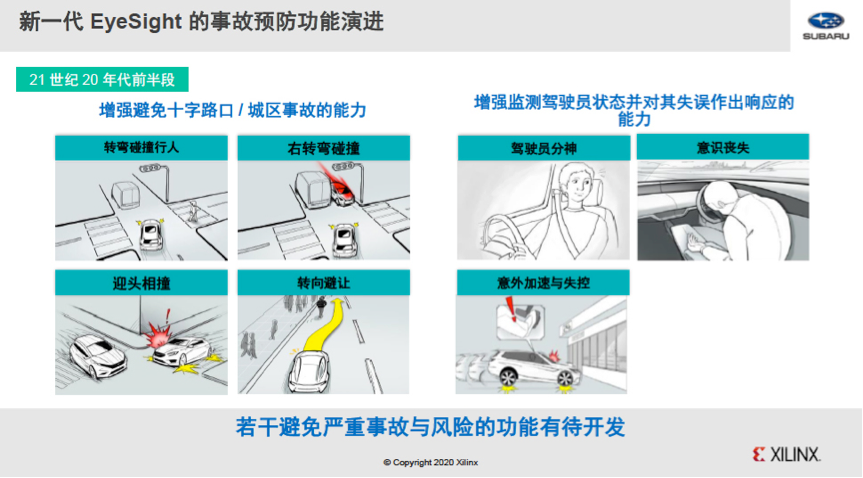
In addition to features like automatic emergency braking, adaptive cruise control, and lane-keeping assistance, the new system can also recognize whether there are vehicles in adjacent lanes and whether a vehicle is approaching from an adjacent lane, enhancing its ability to prevent accidents at intersections. When the driver is distracted, the new EyeSight can alert the driver to avoid accidents.
On highways, after equipping the new EyeSight system, the proactive lane-change assistance feature based on curve prediction and automatic deceleration can detect nearby vehicles with high precision, continuously monitoring road conditions and assisting in correcting driving behavior.

Why Subaru Chooses Xilinx
Eiji Shibata stated in the interview: “Our goal is to process with a certain quality of image data to capture distant objects with a wider field of view, so Xilinx’s efficient device concept is the best choice to achieve our goals.
In the previous version, we used ASIC (Application Specific Integrated Circuit), but with ASIC, we could never achieve the flexibility of using the latest programs to expand functionality as we do now with Xilinx automotive-grade devices, which are also very advanced in terms of energy consumption, making them very efficient automotive-grade devices.”
Willard Tu, Senior Director of Automotive Business at Xilinx, introduced the performance of the Xilinx automotive-grade Zynq UltraScale+™ MPSoC used in the EyeSight system.

Based on Xilinx’s 16nm technology, Zynq UltraScale+™ MPSoC has powerful pipeline parallel and data parallel computing capabilities, suitable for both AI edge computing and domain controllers. Whether on the windshield or other parts of the vehicle, it meets ADAS requirements. It not only provides an appropriate performance-to-power ratio but also offers critical functional safety and confidentiality features, making it highly suitable for various automotive customer platforms.
Additionally, besides the advanced nature and scalability of the device itself, the high quality and reliability of Xilinx products are well-known.
Xilinx invented the world’s first FPGA in 1984 and is currently the number one in the FPGA market, with annual revenues exceeding $3 billion. Its products are widely used in communications, aerospace, automotive, medical, and industrial control.
Xilinx has been in the automotive industry for over 15 years. To date, Xilinx has over 200 global partners in the automotive field, covering all major Tier 1 manufacturers, vehicle manufacturers, and various startups.
As of now, over 190 million Xilinx automotive-grade devices have been applied in global automotive systems, with more than 75 million specifically used for mass-produced ADAS.
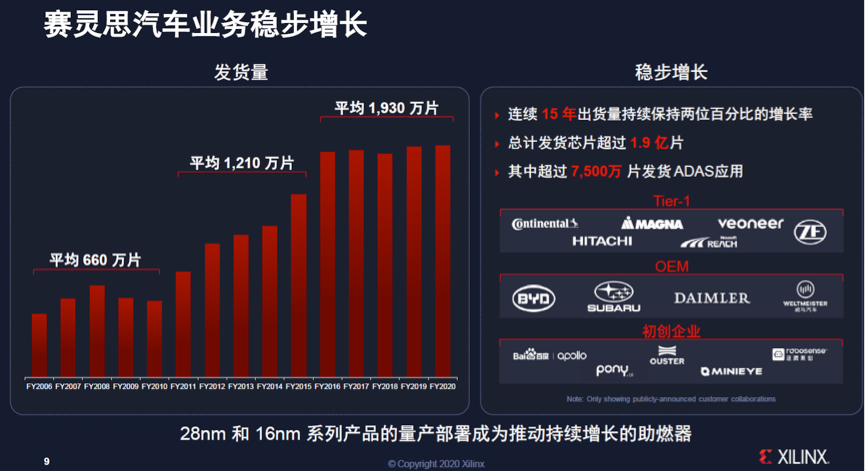
Xilinx has participated in the formulation of many industry standards in the ADAS field, and its products fully meet the rigorous requirements of automotive standards. For example, the Zynq UltraScale+™ MPSoC series used in Subaru’s EyeSight has been certified by Exida and complies with ISO 26262 ASIL-C safety specifications. The reliable quality of the products is also a significant reason for Subaru’s choice of Xilinx automotive-grade devices.

FPGA Applications in the Automotive Industry
The powerful features of the new generation EyeSight system are largely attributed to Xilinx’s FPGA devices, which are adaptable and flexible.
As a very complex heterogeneous computing SoC, the gate circuits and memory connections of FPGA can be defined by users through programmed configuration files, and this programming is not one-time. Therefore, it solves the lack of flexibility in custom circuits and overcomes the limitations of the number of gate circuits in previous programmable devices.
Currently, automotive chips are divided into master control chips (Master control chip) and functional chips (Micro Control Unit), with master control chips mainly including GPU, FPGA, and ASIC.
The GPU (Graphics Processing Unit) is a general-purpose chip that provides the foundational structure for multi-core parallel computing, with a high number of cores to support massive data parallel processing, boasting higher floating-point computational capability, making it more suitable for deep learning computations in autonomous driving. However, the hardware structure of the GPU is fixed, lacking programmability, resulting in lower efficiency for running deep learning algorithms compared to FPGA, and it has weaker management control capabilities with higher power consumption.
ASICs (Application Specific Integrated Circuits) are integrated circuits designed and manufactured for specific product requirements, capable of enhancing specific functionalities, with higher processing speeds and lower power consumption. However, the development costs (mold costs) are currently high, with long development and verification cycles. For the rapidly changing safety performance requirements of the automotive market, fixed ASICs cannot meet these needs, and if the product scale is not large enough, unit costs cannot be reduced.
FPGA essentially has no instructions and does not require shared memory architecture, achieving both pipeline parallel and data parallel processing, which can reach higher concurrent processing speeds than GPUs. As semi-custom hardware, it supports programmable definitions of unit configurations and linking architectures, offering strong flexibility to adapt to a wider variety of algorithms.
However, the technology barriers in the FPGA industry are quite high, as an FPGA company is equivalent to half an IC design company plus half a software company. The hardware layout and wiring are complex, and the design difficulty is high, making the collaboration between hardware and software development more challenging, resulting in fewer developers in the ecosystem, with limited companies capable of entering the FPGA field.
Due to the limited number of companies in this field, FPGA chips have significantly higher profit margins compared to products like GPUs and ASICs. The profit margins for medium and low-density million-gate and ten-million-gate FPGA chip development companies are close to 50%, while high-density hundred-million-gate FPGA chip development companies have profit margins near 70%.
According to the data from the “Hengzhou Bozhi Information Consulting | Semiconductor Integrated Circuit Chip Market Analysis Report,” the global integrated circuit market size reached $437.6 billion in 2019; according to Gartner, the global FPGA market size was $6.9 billion in 2019.
Although the FPGA market size is currently not large, with the widespread use of FPGA devices as core components in 5G base stations, automotive terminal devices, and edge computing devices, the certainty of downstream market demand is increasing, and the market size will continue to expand, with promising prospects.
The global FPGA market was previously highly monopolized by two major American giants (Xilinx and Altera), but recently, due to a series of market mergers and the influence of startup teams, the first-tier international market has expanded to include Xilinx, Intel, Lattice, Microsemi, Achronix, Flexlogic, Quicklogic, and others.
In China, well-known FPGA development companies include Unisoc, Haoyun Semiconductor, Anlu Technology, Aogexinwei, Fudan Microelectronics, Zhiduojing, Jingwei Qili, Lianjie Technology, Shenwei Technology, and Aoruizhi. Currently, there is a significant gap between their technology and international advanced levels.
In the global market, Xilinx and Intel (which acquired the second largest FPGA company, Altera) together account for nearly 90% of the market share, with Xilinx holding 56% and Intel 31%. In the Chinese FPGA market, Xilinx’s share exceeds 50%, and Intel’s share is close to 30%. Due to the technological, financial, and talent barriers, as well as the economies of scale brought by FPGA mass production, the industry leader’s position is relatively stable.
According to Willard Tu, FPGA not only reduces latency through parallel computing and synchronous processing but also allows for slower clock frequencies. Lower latency is crucial for ADAS and autonomous driving, which require real-time responses; lower clock frequencies lead to significant power savings, and low power consumption also means less thermal load, which is more favorable for devices installed in the windshield, roof lining, and other high-temperature environments.
As ADAS and autonomous driving require extensive innovation and very complex programming, as well as significant time for testing and validation, chip adaptability is crucial. Most Xilinx FPGA devices adopt pin-compatible packaging, allowing developers to design hardware according to different needs to accommodate low, medium, and high versions of ADAS functionality packages, scaling costs by selecting the minimum density device required.
FPGA devices can also serve multiple generations of products with the same device. In contrast, with ASICs, new generation products require the development of entirely new chips, which represents a significant hidden cost for customers.
Xilinx FPGAs also feature a unique Dynamic Function Exchange (DFX) capability, allowing developers to create unique differentiated processing solutions, providing two completely mutually exclusive functions with one SoC.
For example, in Subaru vehicles, when in highway driving mode, Xilinx’s automotive-grade device can be designed as a front camera, but when in low-speed mode, Subaru can reprogram the same device to achieve automatic parking/360° surround view functions.
Willard Tu believes that most descriptions of FPGA disadvantages stem from historical prejudices regarding costs; some customers may think that FPGAs are very expensive and not suitable for mass production. In fact, since the 90nm node, Xilinx devices have been highly cost-effective in the automotive industry; otherwise, there wouldn’t be over 190 million Xilinx automotive-grade devices applied in the automotive industry.
He stated, “If the functions provided by Xilinx do not have good cost performance, Subaru would certainly not choose our devices to develop their EyeSight system.”
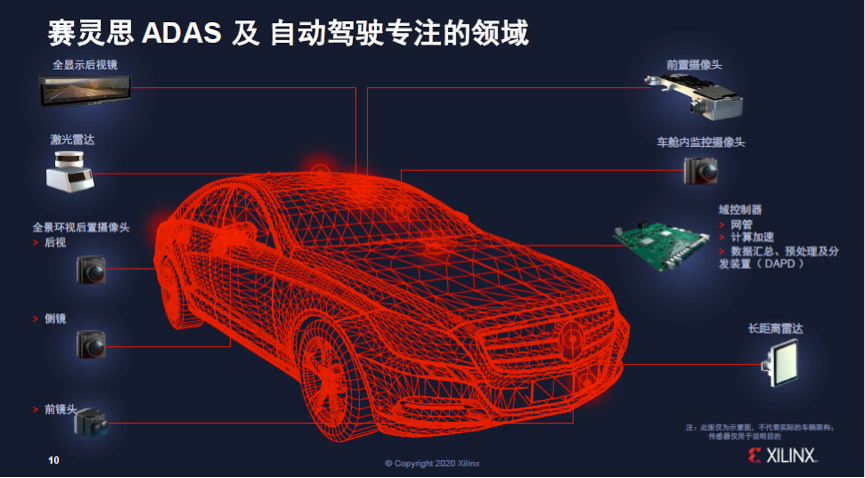
In the ADAS and autonomous driving fields, Xilinx’s automotive-grade devices are currently used not only in front cameras but also in electronic rearview mirrors, laser radars, long-range radars, 360° surround view rear cameras, in-cabin monitoring cameras, and domain controllers.

Outlook for the Future
Regarding the future in the ADAS field, Willard Tu is full of confidence: “Xilinx currently ranks second in the market for front cameras, and it is expected that front camera functions will become a standard configuration between 2020 and 2023. Additionally, driver monitoring systems and automatic emergency braking are two hot configurations that Xilinx is focusing on.”
Regarding autonomous driving, he believes that Xilinx has done very well in laser radar, almost capturing 100% of the market share. Furthermore, he is optimistic about 4D imaging radar using radio waves, which has performance similar to laser radar, albeit with lower resolution, yet can provide point clouds, height, speed, distance, and angle data.
For future research and development, Willard Tu stated that Xilinx has begun to realize that improvements in process nodes from 16nm to 7nm and then to 5nm may not be the best path to optimize performance. Therefore, at the 7nm node, Xilinx has developed a brand-new AI engine to enhance processing capabilities through deep neural networks.
Another technical direction for Xilinx is to improve packaging technology, aiming to enhance heat dissipation capabilities to cluster many processors together. However, this new technology does not require extensive active thermal management, as this could increase costs.
As for the future development of Subaru’s EyeSight system, Eiji Shibata stated: “In 2020, Subaru will introduce the new generation EyeSight advanced driver assistance system; we are investigating the costs and performance of various technologies in different cities and the effectiveness of reducing accidents. By 2025, we will equip the most cost-effective technology and sensors.”
Regardless, ensuring the safety of all traffic participants, including drivers and pedestrians, is our most important task. In the future, it may be possible to achieve autonomous driving, but I believe that the evolution of driver assistance technology should be the top priority.”



An Jin: “Overcoming Difficulties through Innovation” is JAC’s New Interpretation of “Chassis Spirit”
⇧ Top ❂Read Count 1073 ✎Comments 1
Cao Defang: Relying entirely on subsidies is equivalent to death
⇧ Top ❂Read Count 2951 ✎Comments 5
Zeng Yuqun: The world’s number one electric vehicle market will be taken away by Europe this year; we must not wake up early and arrive late
⇧ Top ❂Read Count 6038 ✎Comments 19
XU Heyi: The transformation of identity does not change my original intention and mission as a Chinese automotive person
❂Read Count 8567 ✎Comments 6
Jia Ke’s Thank You Letter to All Friends Participating in the 12th China Automotive Blue Book Forum
❂Read Count 2865 ✎Comments 9
Zhu Yan Feng’s Stand-up Comedy: Only by Surviving Winter Can We Have Spring
❂Read Count 5836 ✎Comments 4

♨ Hot Topics ❂Read Count 366 ✎Comments 18
These 43 Golden Sentences Went Viral on the Third Day of the Automotive Blue Book Forum
❂Read Count 3700 ✎Comments 2
How Can Automotive Companies Successfully Transform without Being Eliminated?
❂Read Count 13855 ✎Comments 7

❂Read Count 1418 ✎Comments 6
XU Liuping’s Profound Insights: Moving Forward in Adversity, Seizing Opportunities in Crisis, and Transitioning to Leapfrog Development
❂Read Count 5901 ✎Comments 6

Click to Read the Original Text for Registration▼